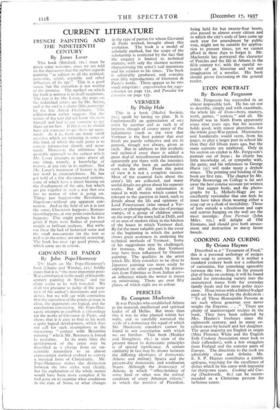GIOVANNI DI PAOLO By John Pope-Hennessy
The blurb on Mr. Pope-Hennessy's book (Chatto and Windus, ars.) boldly states that it is " the most important post- War contribution to the study offifteenth- century painting in Siena," and the claim seems to be well founded. We shall not presume to judge of the accu- racy of the author's documents and evi- dence, but we will say with conviction that the cxposition of the points at issue is clear, the arguments are logical, and the conclusions convincing. Mr. Pope-Hen- nessy attempts to establish a chronology for the works of Giovanni di Paolo, and shows that it is easy to find in his work a quite logical development, which does not call for such assumptions as the mysterious " contact with Byzantine painting " which Mr. Berenson is forced
to postulate. In its main lines the development of the artist may be described as a change from an un- scientific naturalism to an almost expressionist method evolved to convey a mystical form of Christianity. Mr. Pope-Hennessy makes the distinction between the two styles very clearly, but his explanation of the whole matter would have been more complete if he had gone on to examine what conditions in the state of Siena, or what changes
in the type of patron for whom Giovanni di Paolo worked, brought about this evolution. The book is a model of scholarly method, but the scope of the scholarship is restricted by the fact that the enquiry is limited to technical matters, with only the shortest sections characterising the artist's real intentions and his relation to his times. The book is admirably produced, and contains over fifty reproductions of Giovanni di Paolo's works. There appear to be two small misprints.: zugeschreiben for zuge- schrieben on page 131, and Paradisi for Paradise on page 135.














































 Previous page
Previous page